Learning to properly attach a banjo strap is a crucial fundamental skill that every banjo player should strive to master. Not only does a well-secured strap provide a comfortable and stable playing experience, but it also contributes to enhancing your overall performance and reducing the risk of accidental drops during your banjo sessions. In this comprehensive manual, we will take you right step by step process necessary to securely and safely attach your banjo strap, ensuring that you can fully immerse yourself in the joy of playing this magnificent instrument.
Standard Cradle Strap
The cradle strap is a popular choice among banjo players because of its secure fit and ability to evenly support the instrument’s weight. In order to mount the strap, start by threading the bottom of the belt through the brackets on the banjo’s side, ensuring it passes under the tailpiece and over the tension hoop. Next, loop the strap around and thread it back through the brackets on the opposite side of the banjo. After the strap is pulled apart, take a moment to ensure it is not twisted and lays flat against the body of the banjo.This provides maximum comfort and stability while playing. With the strap securely fastened, you can now enjoy playing your banjo with confidence and ease, knowing that the weight is evenly distributed and the strap is adjusted to your desired length for maximum comfort.[1]
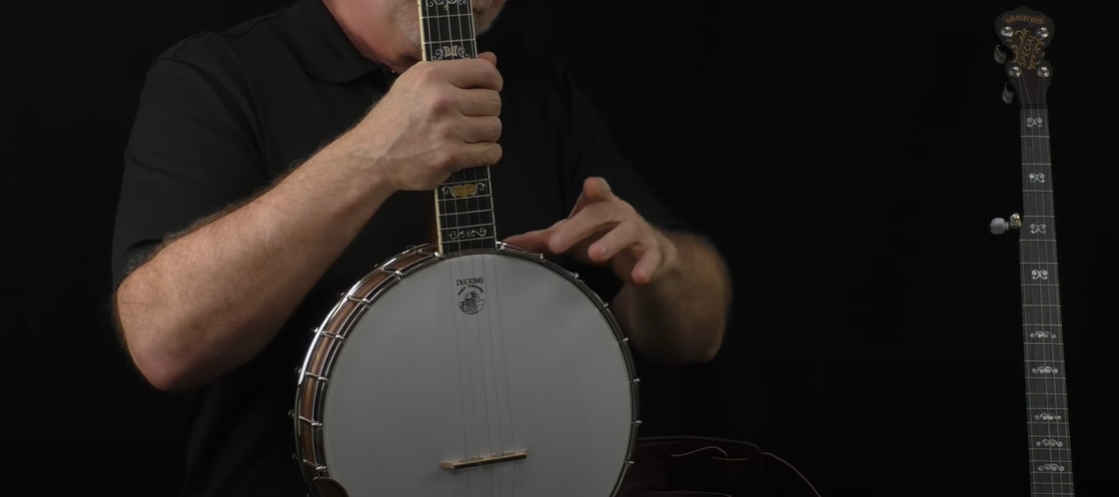
Altered Cradle Strap
Changed cradle belt, unlike the standard version, features two additional connection points, offering increased stability and reduced pressure on the banjo’s pot. This design improvement ensures a more secure and comfortable playing experience.
To attach the modified carrycot strap, you must first thread the belt across the brackets in the same way as with the regular carrycot strap. However, once you’ve threaded it through one side, instead of going straight across the banjo’s body, bring it up and over the armrest. This innovative approach provides an extra layer of support and stability, preventing unwanted movement during play.
Again, ensure the strap is not twisted and lays flat against the banjo’s body. This meticulous attention to detail guarantees optimal comfort and performance for musicians of all skill levels.
Remember to adjust the strap’s length to find the perfect balance between comfort and functionality. With this enhanced cradle strap, you can elevate your playing experience and enjoy the banjo’s rich tones with ease.[1]
Ways to Attach a Banjo Strap
There are several ways to attach a banjo strap, each with its own advantages, and the decision usually depends on your personal preferences and the type of banjo being used.
- The Cradle Strap Method: This is the most traditional method and it works well for heavier banjos. As explained in previous sections, there are two variations of this method – Standard and Altered.
- The Clip-On Strap Method: This is a quick and easy way to attach a strap, particularly suitable for lighter banjos. The clip-on strap has hooks that simply clip onto the brackets of the banjo.
- The Loop Attachment Method: This method requires the lanyard to be pulled through a fastener loop, which is then secured onto the bracket hooks of the banjo.
Each method comes with its pros and cons, but the most important thing is to ensure that the strap is secure, comfortable, and allows you to play the banjo freely and without hindrance.[1]
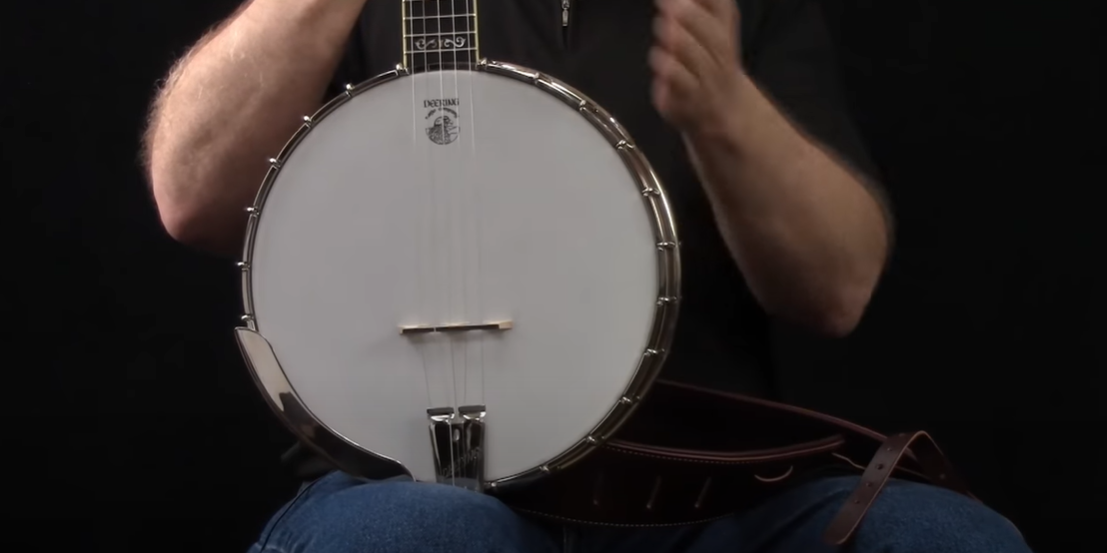
Can You Put A Guitar Strap On A Banjo?
Yes, it is possible to use a guitar strap on a banjo, but there are a few things you should consider before doing so. Guitar straps and banjo straps are designed differently in terms of weight distribution and attachment style, which can affect comfort and stability while playing.
While wearing a guitar strap on a banjo, it’s important to find one that fits well and feels secure. Look for a strap that can be easily attached to the banjo brackets near the neck and tailpiece. Ensure that the strap is adjusted to a length that allows you to hold the banjo comfortably keeping the correct posture at the same time.
If you decide to use a guitar strap on your banjo, it’s recommended to test it out after attaching it to ensure it feels right and doesn’t hinder your playing. Pay attention to how the strap feels on your shoulder and whether it affects your ability to hold and play the banjo comfortably.
Remember, finding the right strap for your banjo is crucial for an enjoyable playing experience. Whether you choose a banjo strap or a guitar strap, prioritize comfort and stability to make the most of your musical journey.[2]
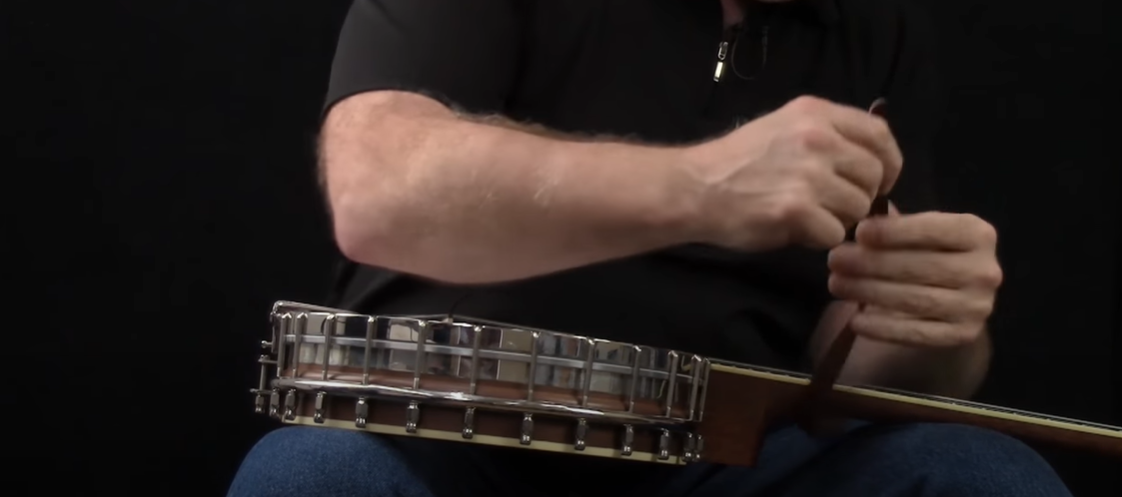
Do You Need A Strap For A Banjo?
While a strap is not an absolute necessity for playing the banjo, it is highly recommended, particularly for beginners or those planning to play for extended periods of time. A strap provides additional stability, reducing the risk of accidental drops and allowing for a more comfortable playing experience. It frees up both hands to focus solely on the strings and fretboard, rather than having to support the weight of the instrument. This is particularly beneficial for heavier banjos or for playing while standing, as it allows for better posture and less strain on the body.
Moreover, using a strap can enhance the overall playing experience, especially during longer practice sessions. It allows for longer, uninterrupted play, as it takes away the need to constantly adjust the instrument’s position. With a strap, you can fully immerse yourself in the music and concentrate on perfecting your technique.
Ultimately, the decision to use a strap comes down to personal preference and the specific needs of each individual player. However, considering the added stability, comfort, and convenience it provides, using a strap is a small investment that can greatly enhance your banjo playing journey.[2]
FAQ
Is a banjo strap the same as a guitar strap?
While both banjo and guitar straps serve the same fundamental purpose of supporting the instrument while it’s played, there are some notable differences between them. Banjo straps, for instance, are typically designed to be shorter and wider compared to guitar straps. This design takes into consideration the hang angle and weight distribution of the banjo, ensuring optimal comfort and stability for the player.
Banjo straps often have a cradle-style design, running under the instrument to evenly distribute its weight across the body. This is crucial, as banjos tend to have a unique shape and weight distribution. On the other hand, guitar straps are usually designed to attach at just two points on the body of the guitar, providing a different level of support.
Moreover, the mounting technique for banjo straps is different from guitar straps. Banjo straps are often looped or clipped through the brackets around the banjo’s drum. This allows for secure attachment and ensures that the strap stays in place during playing. In contrast, guitar straps typically attach directly to strap buttons or pegs located on the guitar body.
While it is technically possible to use a guitar strap for a banjo, as mentioned earlier, it may not provide the same level of comfort and stability. The differences in design and attachment style between banjo and guitar straps can impact the overall playing experience. Therefore, using a banjo strap specifically designed for the instrument is generally recommended for optimal performance.
By understanding these nuances, musicians can make informed decisions when selecting the appropriate strap for their instrument, ensuring both comfort and functionality while playing.
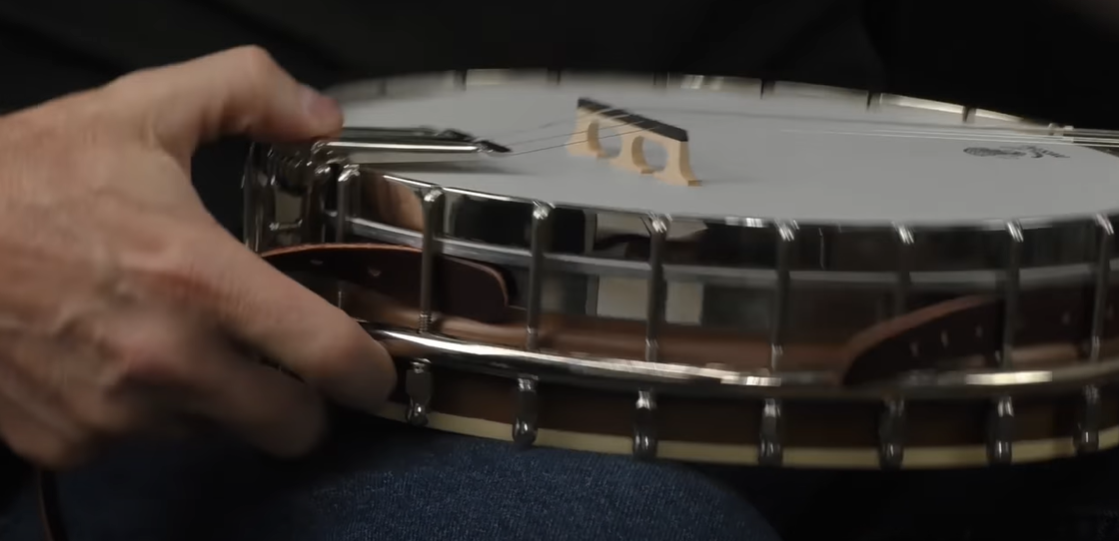
What is a cradle strap for banjo?
A cradle strap for a banjo is a specially designed strap that supports the banjo’s weight across its body, providing both comfort and stability for the player. This strap gets its name from the way it ‘cradles’ the instrument, wrapping around the circumference of the banjo’s pot, rather than attaching at just two points.
Cradle straps are typically wider and shorter than other types of straps, distributing the weight of the banjo more evenly across the player’s shoulder and back. They attach through the brackets around the banjo’s body, threading under the tailpiece and over the tension hoop. This secure attachment method ensures that the banjo remains firmly in place during vigorous playing, allowing the musician to focus on their performance without worrying about the instrument shifting or slipping.
There are two variations of the cradle strap: the standard cradle strap and the altered cradle strap. The latter offers increased stability and reduced pressure on the banjo’s body by featuring additional connection points. These additional connection points can be adjusted to fit the player’s specific preferences, providing customized support and comfort.
While the method of attachment can be slightly more complex than other types of straps, many players prefer cradle straps for their superior comfort and stability, particularly for heavier banjos. The wider and shorter design of the cradle strap not only helps distribute the weight more evenly but also helps alleviate strain on the player’s shoulder and back, allowing for longer and more enjoyable playing sessions.
In summary, the cradle strap is a versatile and reliable accessory for banjo players, offering exceptional comfort, stability, and support. Whether you are a seasoned musician or a beginner, investing in a quality cradle strap can greatly enhance your playing experience and allow you to fully immerse yourself in the joy of banjo music.
How do I choose a banjo strap?
Choosing the right banjo strap is crucial in ensuring optimal comfort and stability during your playing sessions. Let’s delve into some factors to consider when making your choice:
- Type of strap: As mentioned above, cradle straps are a popular choice for heavier banjos due to their superior weight distribution. They provide excellent support, allowing you to play for longer periods without fatigue. On the other hand, clip-on straps or loop attachment straps can be a quick and convenient option for lighter banjos, offering ease of use and portability.
- Material and width: Banjo straps come in various materials, each with its own unique characteristics. Leather straps, for instance, are often praised for their durability and comfort. Although they can be more expensive, their longevity and luxurious feel make them a worthwhile investment. Alternatively, nylon or fabric straps offer a lighter and more affordable option. Additionally, consider the strap’s width as it contributes to the overall comfort level. Wider straps typically distribute the weight of the banjo more evenly across your shoulder, reducing strain and enhancing playing experience.
- Length and adjustability: A well-fitting strap is essential for both comfort and performance. Ensure that the strap is adjustable to suit your body size and preferred playing position. A strap that’s too long or too short can cause discomfort and affect your ability to play comfortably. Take the time to find the perfect length that allows for optimal support and positioning.
- Design and aesthetics: While functionality is key, the strap’s appearance can also play a significant role. Many musicians opt for straps that match their banjo’s style or their own personal aesthetic. Whether you prefer a sleek and minimalistic design or a vibrant and eye-catching pattern, finding a strap that resonates with your visual preferences can add a touch of personality to your instrument.
- Price: Budget is an important consideration when making any purchase. High-end, handcrafted leather straps can be quite pricey, but they often provide exceptional quality and durability. However, it’s worth noting that there are also many affordable options available that offer excellent comfort and functionality. Don’t hesitate to explore different price ranges to find a banjo strap that suits both your needs and your wallet.
Remember, the right banjo strap for you is one that feels secure, comfortable, and complements your unique playing style. Don’t be afraid to try out different types of straps, experimenting until you find the one that perfectly harmonizes with your banjo and enhances your musical journey.
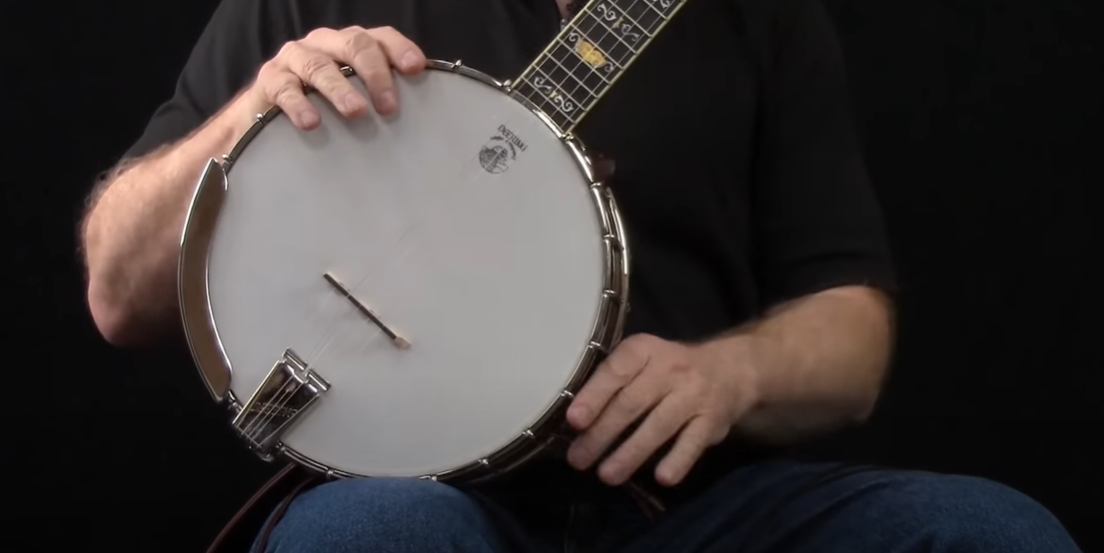
How do you attach a Huber banjo strap?
Attaching a strap to a Huber banjo follows a similar process to other banjos. First, locate the brackets or hooks on the sides of the banjo’s body, which are its natural attachment points. These brackets are usually positioned strategically to provide optimal balance and support.
Begin by threading one end of the strap through a bracket near the neck of the banjo. Many straps come with a lace or tie that is perfect for this purpose, ensuring a secure attachment. Once you’ve threaded the strap through the bracket, you can secure it with a firm knot.
Next, proceed to do the same with the other end of the strap, attaching it to a bracket near the banjo’s tailpiece. It’s important to ensure that both ends of the strap are fastened securely, as this will prevent any potential slippage during play.
While securing the strap, it’s essential to find the right balance between firmness and flexibility. The strap should be snug enough to hold the banjo securely in place, yet not overly tight to restrict your movement or comfort. It should allow for some freedom of movement, allowing you to play comfortably and without any restrictions.
Once the strap is firmly attached, take a moment to adjust its length according to your preference. The ideal length will depend on your playing style and personal comfort. Adjusting the strap’s length will ensure that the banjo sits at a height where your hands can easily reach both the neck and the pot, allowing for smooth and effortless playability.
Finally, before you start strumming away, perform a quick test play to ensure that the strap feels comfortable and does not hinder your movement in any way. It’s important to ensure that the banjo feels secure while wearing the strap and that it doesn’t slide or shift during play.
By following these steps and taking the time to properly attach and adjust the strap, you can enjoy a comfortable and secure playing experience with your Huber banjo.
How does a strap go on a banjo?
Attaching a strap to a banjo is a straightforward process that requires minimal tools and a few simple steps. First, take a moment to examine the banjo’s body and identify the brackets or J-hooks where the strap will be attached. These are typically located near the neck and the tailpiece of the banjo.
Once you’ve located the attachment points, choose a cradle-style strap or any strap that suits your preference. Begin by threading one end of the strap through a bracket near the neck of the banjo. Make sure to secure it with a firm knot, ensuring that it is snug but still allows for some movement. This will help prevent any unnecessary strain on the banjo or discomfort while playing.
Next, repeat the process with the other end of the strap, attaching it to a bracket near the tailpiece of the banjo. It’s important to note that balancing the strap’s position is crucial to maintaining stability while playing. You want the banjo to remain steady and secure, so take a moment to adjust the strap’s length and position accordingly.
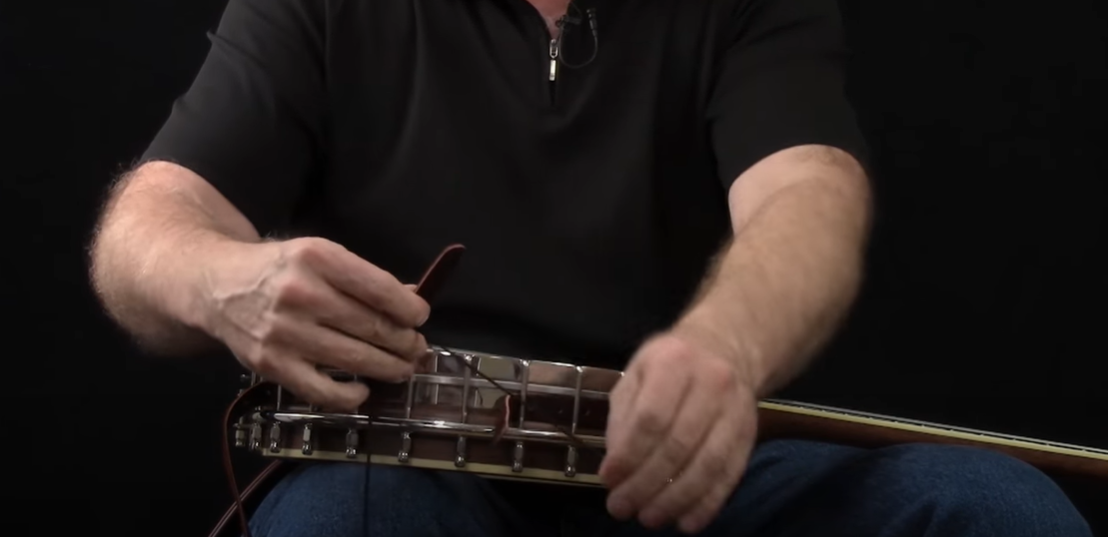
Now, consider your own height and playing comfort. Adjust the length of the strap so that the banjo rests at a point where your hands can easily reach the fretboard and the strings without any strain. This will ensure a comfortable playing experience and allow you to fully enjoy your banjo.
Finally, before you start strumming away, conduct a quick play test to ensure that the strap is comfortable and doesn’t interfere with your playing. Also, double-check that the banjo is securely attached to the strap. This will give you peace of mind and allow you to focus on creating beautiful music without any distractions.
By following these steps and adding a little more detail to the process, you’ll be able to attach a strap to your banjo with ease and confidence. So go ahead, get ready to play, and let the music flow!
Where is the best place to attach a banjo strap?
The most common and generally the best places to attach a banjo strap are at the brackets or J-hooks located around the banjo’s body, specifically near the neck and the tailpiece. These attachment points provide a balanced support for the instrument while playing, allowing the player to maintain a comfortable and secure grip.
If you’re using a cradle-style strap, it’s typically wrapped around the entire circumference of the banjo’s pot, offering enhanced stability and weight distribution. This design ensures that the banjo remains securely in place, even during vigorous playing sessions.
However, the choice of attachment points and strap design may vary depending on the type of banjo and the player’s personal preference. Some banjos may have additional attachment options, such as a strap button or a dedicated strap attachment point on the neck. It’s important to consider these factors and choose the attachment method that provides the most secure and comfortable fit for your specific banjo.
When attaching the strap, always ensure that it is securely fastened and adjusted to the desired length. It should allow you to hold the banjo at a height where you can comfortably reach both the neck and the pot without any strain. This will ensure a comfortable and enjoyable playing experience, allowing you to fully focus on your music without any distractions.
Remember, finding the right strap attachment method and adjusting it to your preference may require some experimentation. Don’t hesitate to try different options and make adjustments until you find the setup that works best for you. With the right strap and proper attachment, you can confidently play your banjo, knowing that it is securely supported and ready to produce beautiful music.
Useful Video: Installing A Cradle Strap On A Banjo | Deering Tech
Conclusion
Choosing the perfect banjo strap is a seemingly small detail that can have a significant impact on your comfort and performance. It’s important to find a strap that strikes a balance between comfort, stability, and aesthetics for an optimal playing experience.
When it comes to heavier banjos, cradle straps are highly recommended due to their superior weight distribution. They help alleviate strain on your shoulders and back, allowing you to play for longer periods without discomfort. Additionally, considering the material of the strap is crucial. Leather, nylon, and fabric are common options, each offering their own unique feel and durability.
The width and adjustability of the strap also play a vital role in your playing experience. A wider strap can help distribute the weight more evenly, while adjustability allows you to find the perfect fit for your body and playing style.
Attaching the strap at the brackets near the neck and tailpiece of the banjo usually provides the best support. This positioning helps maintain balance and stability while you play, ensuring that the banjo stays securely in place.
Ultimately, the key is to choose a strap that feels comfortable and secure to you. It’s important to invest time in finding the right strap that suits your individual needs and preferences. By doing so, you can focus on the music rather than the instrument, allowing your creativity to flow freely.
So, take the time to explore different options, attach the strap properly, and let the music carry you away on a banjo journey like no other!
References:
- https://www.wikihow.com/Put-a-Banjo-Strap-on
- https://www.dummies.com/article/academics-the-arts/music/instruments/banjo/how-to-strap-on-your-banjo-156065/




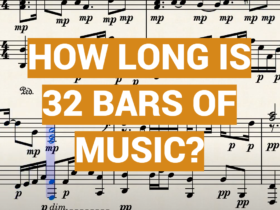
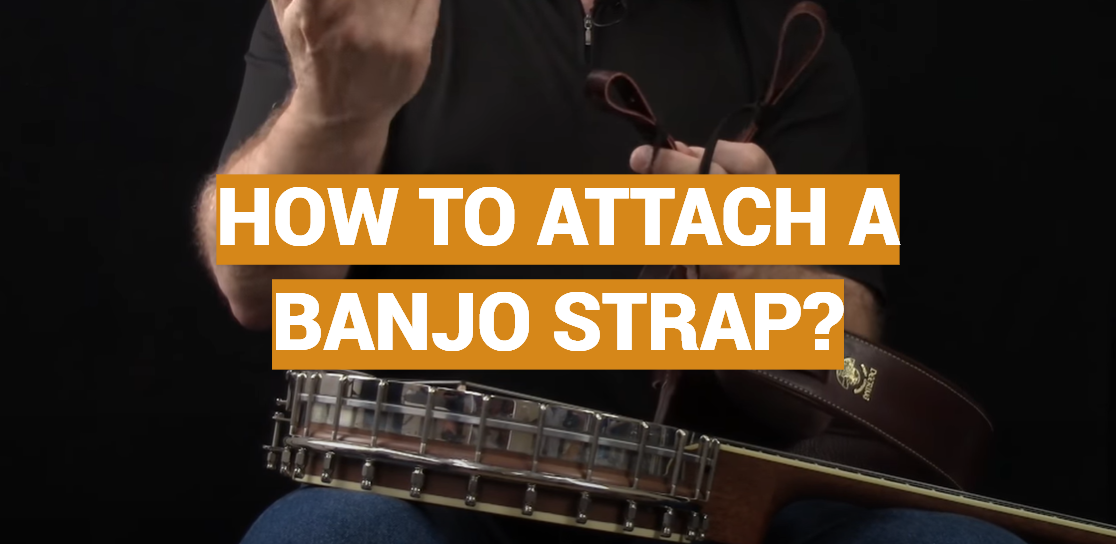
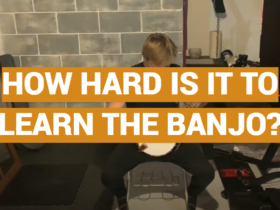

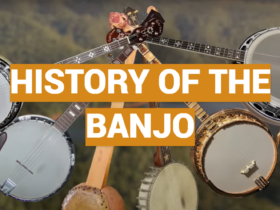
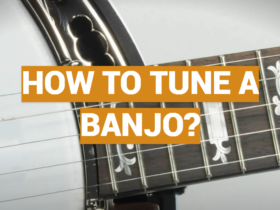
Leave a Reply